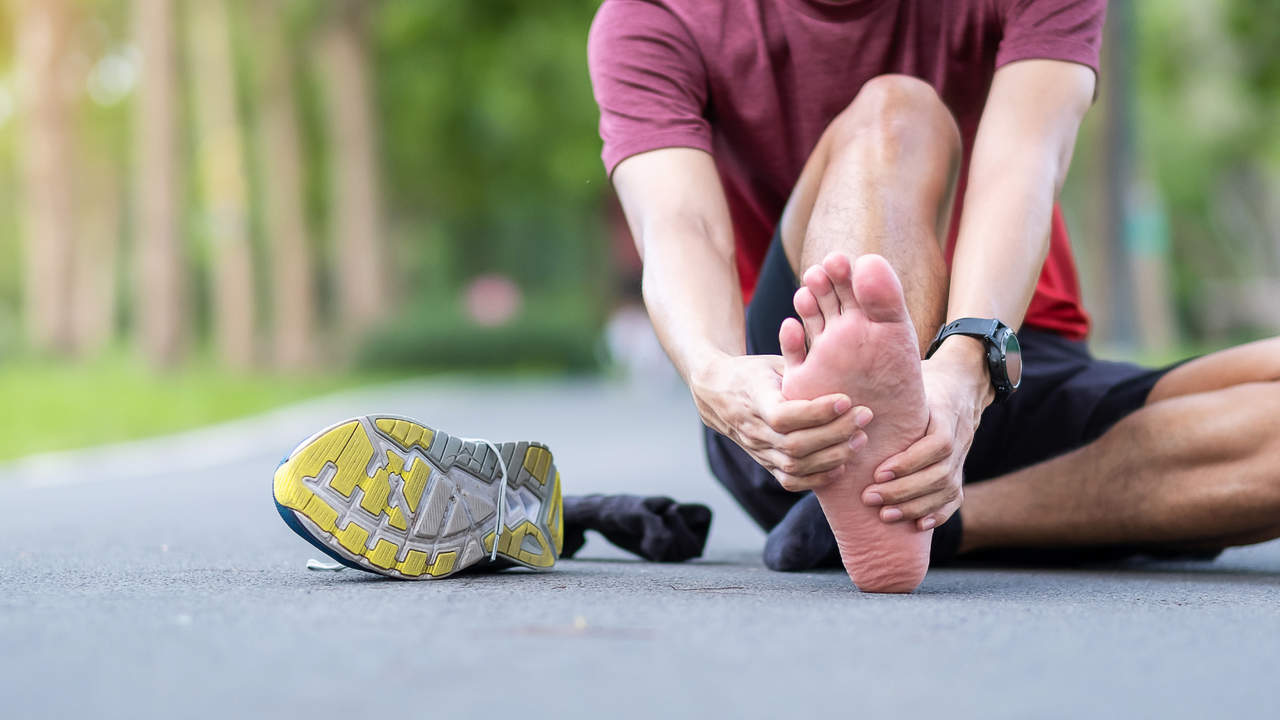
What is Plantar Fasciitis?
Sep 20, 2021Do you dread getting out of bed when your alarm goes off not only because you’re not a morning person, but also because you know when you step onto the ground, it’s going to hurt? The culprit may be plantar fasciitis.
Plantar fasciitis is a foot injury often caused by overuse that affects 7 to 10 percent of the population. It’s the most common cause of heel pain, according to the American Academy of Orthopaedic Surgeons (AAOS). Things like a sudden and steep increase in mileage, overtraining and ill-fitting running shoes are often to blame. Other risk factors include obesity or working a job that requires you to be on your feet all day.
The plantar fascia is a thick band of tissue that runs across the bottom of the foot and connects the heel bone to the toes. The job of the tissue is to absorb impact, but repeated stress, like that caused by running, can result in damage or small tears, triggering an inflammatory response in the fascia. The muscle tightness and sharp heel pain that follows is referred to as plantar fasciitis, or inflammation of the plantar fascia.
Pain can range from a sharp, stabbing sensation in the heel or foot arch to a deep, dull ache. The pain is often worse in the mornings or after sitting or resting for a long period of time. Most of the time, the pain fades after a few minutes as the fascia loosens.
Stretching exercises
Certain exercises can help relieve the pain of plantar fasciitis by strengthening and increasing flexibility in the foot and calf muscles.
Some of these include:
- Ball massage
Roll your bare foot back and forth over a golf ball. When you encounter a spot that’s painful, hold it, then point and flex your toes five times. This exercise helps the tension in the fascia to release. You can use a larger ball, like a lacrosse or tennis ball, but a golf ball will help pinpoint the exact area you need to target.
- Calf stretches
Lunge with your back heel remaining flat against the ground. Slightly bend the knee while keeping the heel against the ground. Deepen the stretch by lunging further. Switch sides. This exercise helps to loosen tightness in the calf muscles, which connect to the Achilles tendon and heel. When the calf muscles are tight, they put stress on the heel and plantar fascia.
- Eccentric calf raises
Standing barefoot, push yourself up onto your toes, then count to four as you slowly lower your feet back to the ground. Progress this exercise by doing one foot at a time, then by standing on a step or block.
- Big toe control
While standing barefoot, push your big toe to the floor and raise your other four toes. Then, do the opposite—push your other four toes down and raise your big toe. Separating the big toe from the other toes improves the strength of your arch and also improves your push-off and stability while running.
Can you run with plantar fasciitis?
If the pain you feel from plantar fasciitis tends to lessen once you start walking, you likely have a mild case and don’t need to take a break from running. That said, it’s not a good idea to increase mileage or intensity while recovering from plantar fasciitis.
Treatment for mild cases generally is as simple as adding arch support, taping or orthotics, taking an anti-inflammatory drug like ibuprofen, icing after running, and performing daily exercises that strengthen the ankle, calf and plantar fascia.
Heel pain that doesn’t lessen with movement, though, typically means you should stop running for the time being. You may be worsening the issue and prolonging your recovery.
If plantar fasciitis doesn’t go away with at-home treatments, a doctor may recommend physical therapy, cortisone injections or acupuncture, and surgery in rare cases. (According to the AAOS, more than 98 percent of people with plantar fasciitis get better without surgery, 90 percent improve within two to three months, and surgery should only be considered after six to 12 months of no improvement with other treatments.)
Prevention is best
Even with exercises and other treatments, plantar fasciitis can take a long time to heal. That’s because the body’s healing response is proportionate to the amount of blood it receives. The plantar fascia has a limited blood supply, so it takes longer to heal than other areas of the body like large muscle groups.
Plantar fasciitis can also become chronic, with symptoms disappearing and then reappearing over time. A 2018 study found that people who have previously had the injury are likely to have it again.
For these reasons, prevention is a runner’s best bet. Doing things like limiting mileage increases to less than 10 percent a week, running in supportive shoes and avoiding walking barefoot can help keep plantar fasciitis at bay.
Now get out there and run your life.
Enter your email address to get weekly episodes delivered to your inbox plus tips on how to become a physically and mentally stronger runner!
Don't worry, we won't blow up your inbox. We just want to send you some great info to help you in your running journey. We hate SPAM, and we will never sell your information, for any reason.

